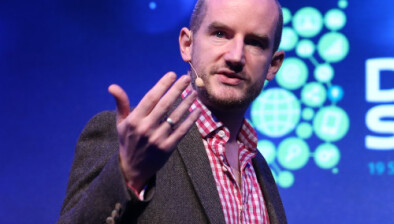Blog: The Irish Constitution has served us well for the most part

Dr Laura Cahillane, lecturer in the School of Law at University of Limerick, shares her view on the Irish Constitution at 80.
‘If there is one thing more than another that is clear and shining through this whole Constitution, it is the fact that the people are the masters.’
When de Valera introduced the draft Constitution into the Dáil on 11 May 1937, he was careful to stress the democratic importance of the document. This year marks the 80th anniversary of the document and this democratic legacy is expounded by the recent announcement to hold up to 7 referendums on potential amendments to the document over the next couple of years.
While it is a document for the people, many people know very little about it and because of this, many constitutional referendums (apart from notable exceptions on divorce, abortion and marriage equality) simply do not exercise the majority of the population.
The drafting of our Constitution
There also exist various misconceptions in relation to the drafting of the document. For example, it was widely believed for many years that de Valera single-handedly wrote the document in his spare time (a rumour de Valera himself did little to discourage).
However, research undertaken in the last few decades has demonstrated that while de Valera was, as Keogh and McCarthy have put it, ‘a brooding omnipresence in the sky’, the lion’s share of the work was carried out by a lawyer and civil servant called John Hearne, who de Valera describes as the document’s architect-in-chief.
There was also a formidable drafting team in the form of Maurice Moynihan, Michael McDunphy, Philip O’Donoghue and Stephen Roche, not to mention the Irish language drafting team of Mícheál Ó Gríobhtha and Ristéard Ó Foghludha, who were assisted at times by Tomás Ó Máille.
A further myth which is often perpetuated and was repeated again recently in the Dáil, is the idea that the Constitution was written by members of the Catholic Church. While we do know that Fr John Charles McQuaid, for example, had a great input on certain sections in the Constitution, his influence has been greatly over-stated by many.
Fr John Charles McQuaid’s influence
The reality is that Ireland of the time was in general a deeply conservative society with Catholic values which are reflected in the Constitution. And thanks again to research on the drafting of the Constitution, we also know that de Valera resisted attempts by the Vatican to insist on an entirely Catholic Constitution which would include a provision stating that the Catholic Church was the one true Church.
In fact, Bunreacht na hÉireann is notable for its inclusion of the Jewish faith, particularly in the context of world politics at the time and is something which gains additional significance with the advantage of hindsight.
In fact, when we consider the Constitution in the context of the late 1930s, it is quite a remarkable document in its commitment to democratic ideals. And while there were fears from the opposition at the time that the introduction of the office of the President was a path to dictatorship, we can see that quite the opposite was the case in reality.
Parts are out of date
The Constitution has served us well for the most part but of course there are parts which are out of date and which need to be changed. One such provision which has caused controversy since its inception is Article 41.2 which speaks of a woman’s life within the home.
While criticism of this Article was confined to certain women’s groups in the late 1930s, nowadays the patriarchal nature of this provision is anathema to most women and the consensus is that it should be changed or removed.
Despite having been written in the conservative 1930s, the Constitution is kept up-to-date by the judiciary’s willingness to interpret it as a ‘living document’. However, there will inevitably be parts of the Constitution which cannot be modernised in this way and will thus require amendment.
At a conference to mark the 80th anniversary of the Constitution in the University of Limerick last Saturday, Supreme Court Judge Mr Justice Donal O’Donnell remarked that the Article on marriage in the Constitution was one such example.
He felt that, contrary to arguments made by some, the previous version of Article 41 could not have been interpreted to include same-sex marriage and even if the judiciary was to give it such a reading, he felt this could have damaged credibility in the judiciary due to the fact that those opposing the idea would not have had sufficient opportunity to be persuaded otherwise.
A referendum, on the other hand, gives the opportunity for both sides to be teased out in the public arena and the subsequent decision has the benefit of democratic legitimacy – something which is sometimes said to be missing from judicial pronouncements on the Constitution.
An interesting moment in constitutional landscape
We are also at an interesting moment in time in the constitutional landscape. As Mr Justice O’Donnell also noted, for many years the Irish Judiciary took their inspiration from their US counterparts whereas in more recent years, the jurisprudence of the European Court of Human Rights has become increasingly significant, as has the UK courts’ interpretation of this body of law. It remains to be seen whether current developments in world politics will have any impact on this development.
Another interesting development is the increasing demand for recognition of what are sometimes referred to as ‘socio-economic rights’ in the Constitution. The right to free primary education is currently the only such right – which creates a direct financial duty on the State – to be specifically enumerated in the document and courts have traditionally been reluctant to stretch the separation of powers doctrine to such an extent as to order the state to provide such rights.
However, recent movements calling for a right to housing to be enshrined in the Constitution may mean a significant change. One further sentiment which emerged from the Conference in UL at the weekend, was that the Constitution should not be the preserve of lawyers but should be embraced by the people generally.
When introducing the document into the Dáil, de Valera commented that ‘It does seem to me to be a document which is easily understood by anybody who really takes the trouble to read it carefully’.
For the most part this is true and there are many ways in which we can educate ourselves about the most basic law of our State. Our elected representatives are often guilty of failing to engage with this document or hiding behind it but perhaps we, the people, also need to become more engaged and learn more about this fascinating document.
Given that we are the ‘masters’, we have a responsibility to engage with the document itself and with the debate around potential changes to it. It is a little blue book which costs €2.50 in a book shop and is free to download online – With so many potential changes coming down the track, I suggest everyone should have a copy.







